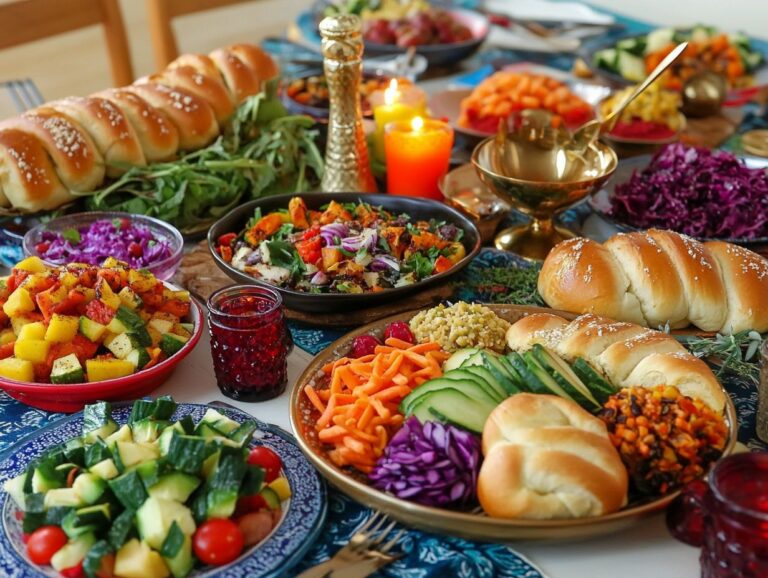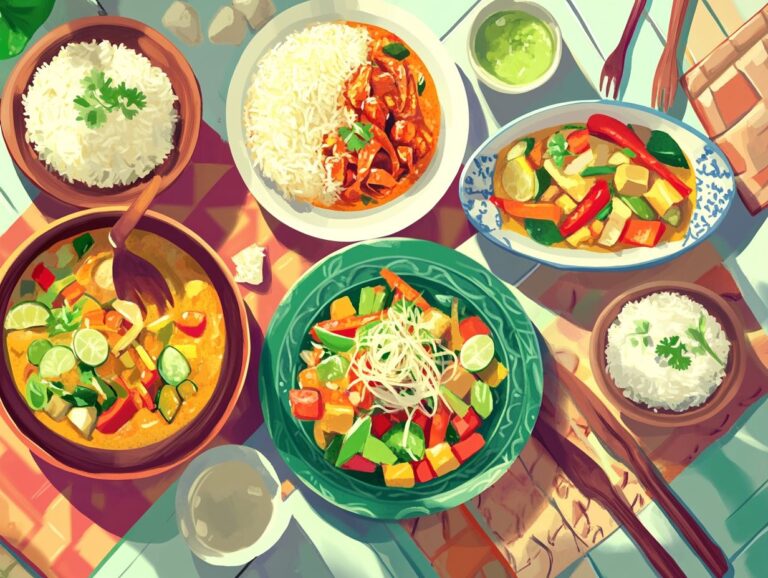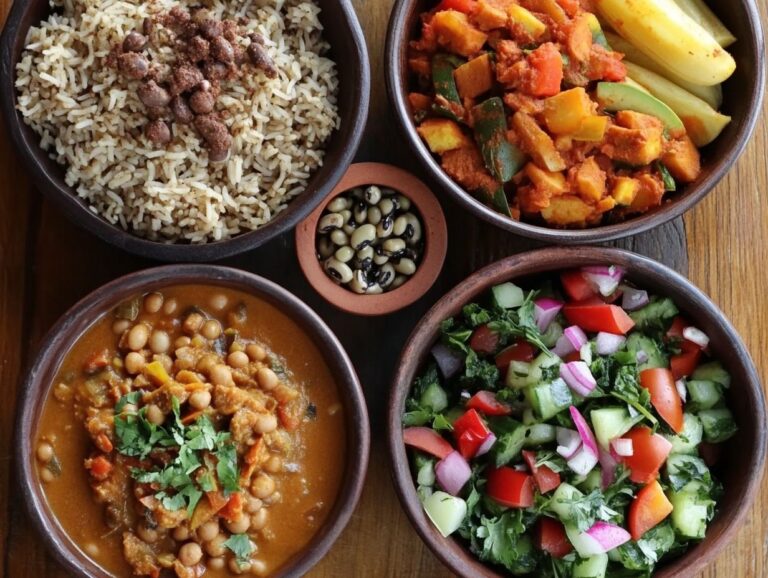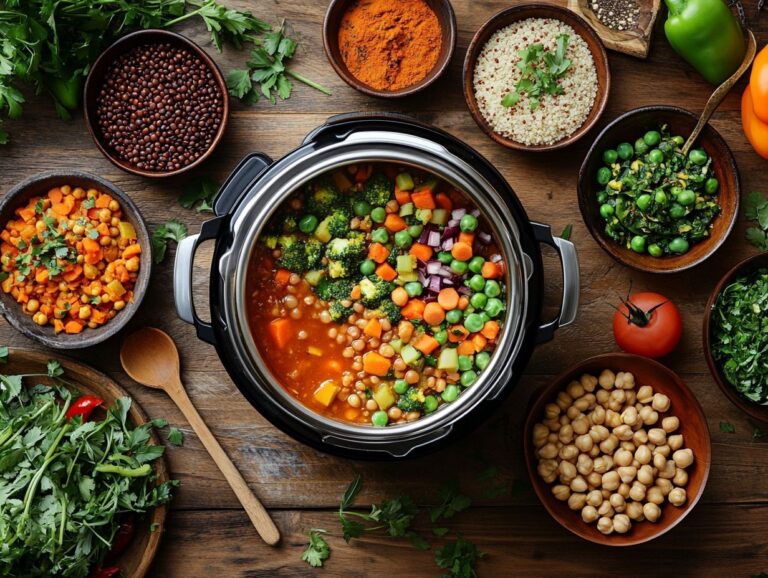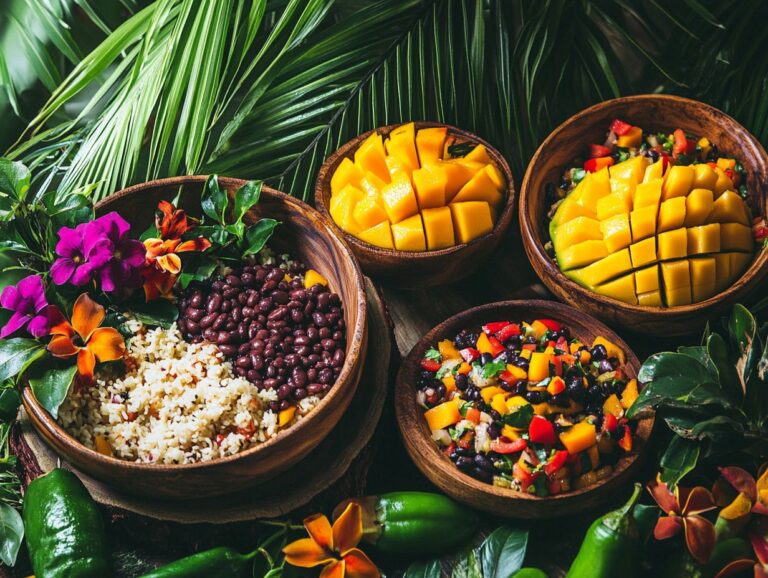The low glycemic diet is a dietary plan designed to achieve stable blood sugar levels and promote overall health by focusing on foods with a low glycemic index. This diet emphasizes whole grains, fiber-rich foods, and plant-based protein sources. It offers balanced blood sugar control and can be part of a healthy, nutrient-dense lifestyle. It can help manage diabetes, prevent energy crashes, and is also delicious.
### Low Glycemic Diet Ingredients
#### Low Glycemic Diet Vegan Recipes
**Low Glycemic Diet Breakfast Recipes**
**Almond Butter and Chia Seed Pudding**
*Ingredients with Sugar Alternatives:*
– 1 cup unsweetened almond milk or coconut milk for a creamy texture
– 1 tablespoon almond butter
– 2 tablespoons chia seeds
– 1/2 teaspoon vanilla extract
– 1/2 teaspoon maple syrup or agave syrup
– 1/4 teaspoon cinnamon or other spices
– Pinch of salt
– Berries (for topping), such as low glycemic fruits like strawberries or blueberries
*Instructions for Cooking and Portion Control:*
1. In a bowl, mix together almond milk, almond butter, chia seeds, vanilla extract, maple syrup, cinnamon, and salt.
2. Cover and refrigerate for at least 2 hours or overnight.
3. Stir well, add more almond milk if desired, and top with berries before serving.
**Quinoa Porridge**
*Ingredients:*
– 1/2 cup quinoa
– 1 cup almond milk
– 1/4 teaspoon salt
– 1/2 teaspoon vanilla extract
– 1 tablespoon maple syrup or stevia
– 1 tablespoon almond butter
– Berries (for topping)
*Instructions:*
1. Rinse quinoa and combine it with almond milk and salt in a saucepan.
2. Bring to a boil, then reduce the heat to low and cover to simmer for 15-20 minutes until the liquid is absorbed.
3. Remove from heat, let sit for 5 minutes, fluff with a fork, and stir in vanilla, maple syrup, and almond butter.
4. Serve warm with berries, and consider adding a sprinkle of flaxseeds for extra fiber.
#### Low Glycemic Diet Lunch Recipes
**Chickpea Salad**
*Ingredients:*
– 1 can (15 oz) chickpeas, drained and rinsed
– 1 cup cherry tomatoes, halved
– 1/2 cucumber, diced
– 1/4 red onion, diced
– 1/4 cup parsley, chopped
– 2 tablespoons olive oil
– 1 tablespoon lemon juice
– Salt and pepper to taste
*Instructions:*
1. In a bowl, combine chickpeas, tomatoes, cucumber, onion, and parsley. These legumes and vegetables are excellent fiber sources that support a plant-based diet.
2. In a separate small bowl, whisk together olive oil, lemon juice, salt, and pepper.
3. Drizzle the dressing over the salad, toss gently, and serve.
#### Low Glycemic Diet Dinner Recipes
**Cauliflower Rice Stir-fry**
*Ingredients:*
– 2 cups cauliflower rice
– 1 cup mixed vegetables (bell peppers, carrots, peas)
– 1/2 cup tofu, cubed
– 2 tablespoons soy sauce
– 1 tablespoon sesame oil
– 1 teaspoon ginger, grated
– 1 tablespoon sesame seeds
*Instructions:*
1. Heat sesame oil in a pan, add ginger, and sauté for 30 seconds.
2. Add tofu and cook until golden.
3. Add mixed vegetables and stir-fry until tender.
4. Stir in cauliflower rice and soy sauce, cooking for an additional 4-5 minutes.
5. Serve hot, garnished with sesame seeds.
**Lentil Soup**
*Ingredients:*
– 1 cup green or brown lentils, rinsed
– 1 onion, chopped
– 2 carrots, chopped
– 2 celery stalks, chopped
– 4 garlic cloves, minced
– 6 cups vegetable broth
– 1 bay leaf
– 1 teaspoon cumin
– Salt and pepper to taste
*Instructions:*
1. In a large pot, sauté onion, garlic, carrots, and celery until the vegetables are tender.
2. Add lentils, vegetable broth, bay leaf, and cumin.
3. Bring to a boil, then reduce heat and simmer for 30-40 minutes until lentils are soft.
4. Season with salt and pepper, remove the bay leaf, and serve hot.
#### Low Glycemic Diet Snack Recipes
**Apple and Almond Butter Sandwiches**
*Ingredients:*
– 1 apple, cored and sliced
– 1/4 cup almond butter
– 2 tablespoons raisins (optional)
*Instructions:*
1. Spread almond butter on one apple slice and top with raisins if desired.
2. Sandwich with another apple slice.
**Low Glycemic Diet Green Smoothie**
*Ingredients:*
– 1 cup spinach, rich in vitamins and antioxidants
– 1/2 avocado, a healthy fat for improved insulin response
– 1/4 cucumber
– 1 cup unsweetened almond milk
– 1 tablespoon chia seeds
*Instructions:*
1. Blend all ingredients until smooth.
2. Enjoy as a refreshing snack!
Understanding the Low Glycemic Diet and Its Benefits
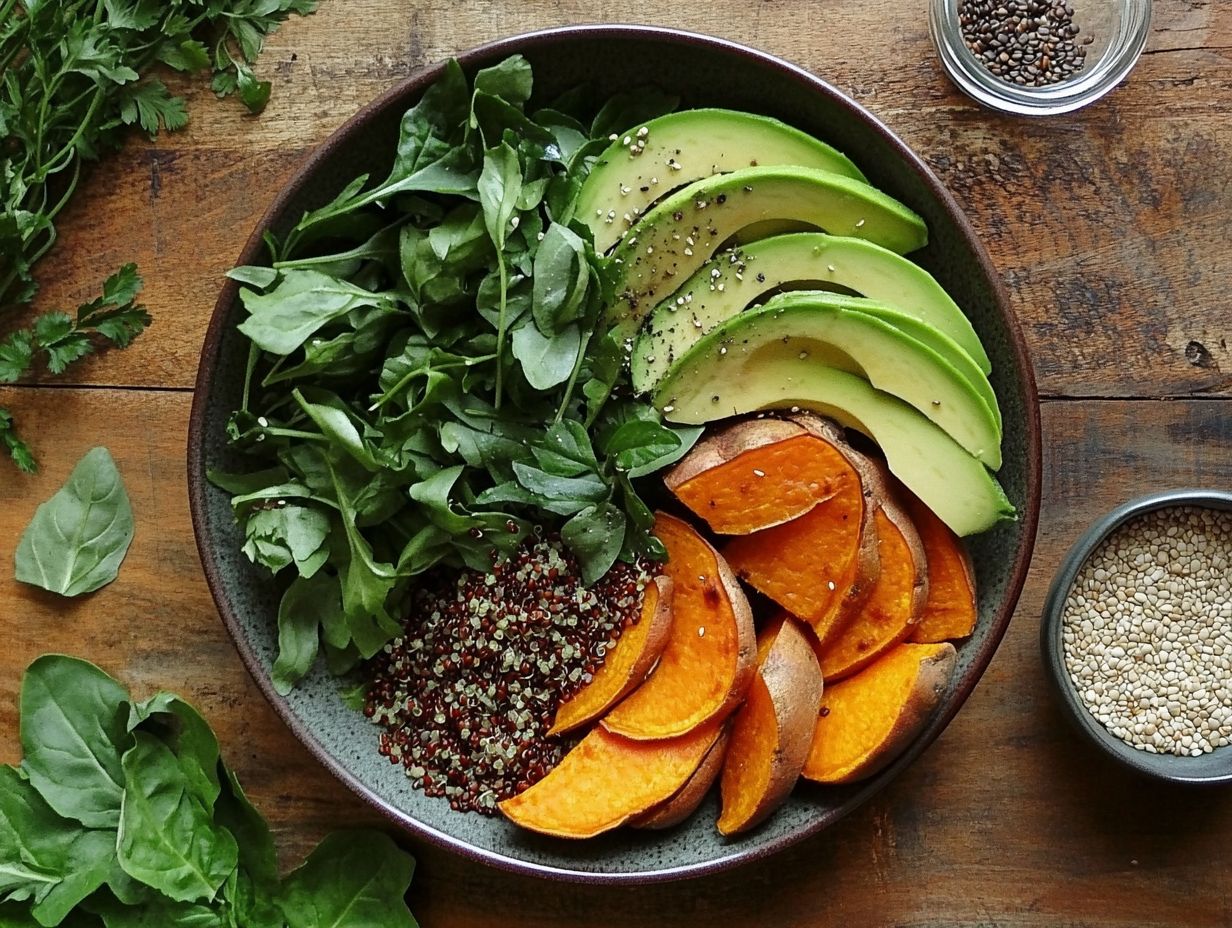
The Low Glycemic Diet is a nutritional plan that focuses on consuming foods with a low glycemic index to maintain balanced blood sugar levels. This diet promotes a vegan and whole foods approach, incorporating legumes, quinoa, sweet potatoes, nuts, seeds, vegetables, fruits, and whole grains, all of which have been linked to improved insulin sensitivity and metabolic health.
By prioritizing low glycemic foods, individuals can experience enhanced wellness and more effective long-term blood sugar control, ultimately leading to better health outcomes. Incorporating a variety of cooking techniques, such as stir-fry and raw food preparation, can also support a nutritious and balanced diet.
What is the Low Glycemic Index?
The glycemic index (GI) is a ranking system for carbohydrates in foods based on how they affect blood glucose levels when consumed on their own. Low GI foods raise blood sugar levels slowly, while high GI foods cause rapid increases. This index categorizes carbohydrate-containing foods according to their potential to elevate blood sugar levels after consumption. Understanding the glycemic index is crucial for individuals with diabetes and those looking to improve their overall health.
Foods are classified into three groups based on their GI:
- Low GI (55 or less)
- Medium GI (56-69)
- High GI (70 or more)
Low GI foods, such as whole grains and legumes, are digested and absorbed slowly, helping to maintain energy levels and prevent spikes in blood glucose. According to diabetes management guidelines, low glycemic index foods, which contribute to a lower glycemic load, are preferred because they aid in maintaining balanced blood glucose levels. Frequent swings in blood glucose levels, whether towards low (hypoglycemia) or high (hyperglycemia), can lead to insulin insensitivity and complications associated with diabetes. Therefore, it is important for long-term health to focus on consuming low GI foods, as high GI foods can quickly elevate blood glucose levels.
How It Can Help Manage Blood Sugar
Controlling blood sugar is essential for overall health, particularly for individuals with diabetes. A low glycemic diet can improve insulin sensitivity and help regulate blood sugar levels.
Meal planning that focuses on low glycemic foods enables dieters to create balanced meals that stabilize blood glucose and reduce the risk of spikes. Including healthy fats, such as those found in avocados and nuts, along with fiber from whole grains, legumes, and vegetables, contributes to maintaining stable blood sugar levels.
To facilitate effective meal planning, preparing meals in advance and using fresh, whole foods ensures that nutritious options are readily available when needed. For instance, a quinoa salad with black beans, fresh herbs, and a drizzle of olive oil makes for a perfect lunch or dinner.
Other easy-to-prepare meals, such as baked salmon with steamed broccoli and a side of sweet potato or a hearty lentil soup, provide essential nutrients to help prevent diabetes complications.
Key Ingredients for Low Glycemic Vegan Recipes
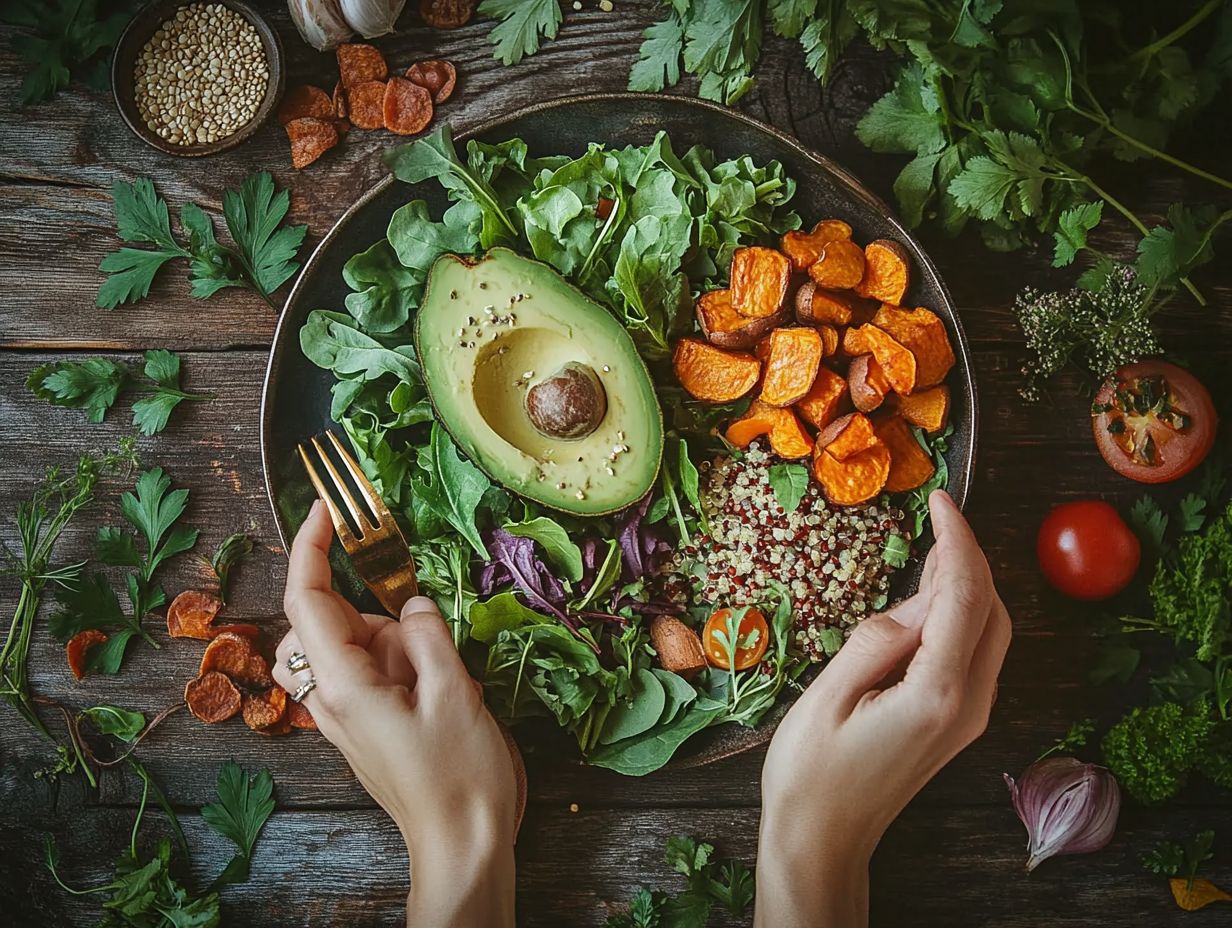
Low glycemic vegan recipes incorporate whole grains, legumes, vegetables, and fruits that are naturally low on the glycemic index. This approach not only promotes balanced blood sugar levels and overall health but also aligns with ethical and clean eating practices. It supports meal diversity and ensures an adequate intake of vitamins, minerals, and antioxidants.
Additionally, healthy fats and plant-based proteins, such as nuts and seeds, enhance the nutritional profile of these low glycemic vegan recipes.
Whole Grains and High-Fiber Foods
Whole grains and high-fiber foods are essential components of a low glycemic diet, as they provide important nutrients while helping to maintain balanced blood sugar levels. These foods also contribute to a healthy lifestyle and can aid in weight management due to their low glycemic load.
Foods such as quinoa, brown rice, and oats contain complex carbohydrates that are digested more slowly, promoting a feeling of fullness. Additionally, their fiber content supports healthy digestion. These nutritious ingredients contribute to macro balance and enhance overall nutrition by supplying vital vitamins, minerals, and antioxidants, crucial for metabolic health and energy levels.
Incorporating staples like barley, farro, or whole wheat into meals can effectively help control blood sugar levels while increasing satiety.
For those following a vegan lifestyle, high-fiber vegetables such as kale, spinach, and legumes can easily be added to daily meals. Hearty vegan recipes, such as grain bowls or stir-fries, can conveniently include these foods, making it simpler to achieve a balanced diet.
Healthy Fats and Plant-Based Protein Sources
Incorporating healthy fats and plant-based protein sources into low-glycemic vegan recipes can enhance flavor and provide essential nutrients to support overall health. Foods such as avocados, olive oil, nuts, seeds, and tofu or tempeh not only add satisfying textures but also promote improved heart health and nutrient absorption. These ingredients are aligned with anti-inflammatory foods that aid in reducing inflammation.
By integrating these ingredients into their meals, individuals can achieve a better energy balance and support their clean eating goals. For example, pairing quinoa, a great source of plant-based protein, with a drizzle of olive oil and a sprinkle of chopped walnuts creates a nutrient-dense dish that is both filling and delicious.
Another delightful option is a vibrant salad featuring kale, avocado, and pumpkin seeds, dressed with lemon and tahini; this combination not only tantalizes the taste buds but also maximizes nutrient uptake.
Exploring these combinations not only diversifies one’s diet but also ensures an adequate intake of essential fatty acids and protein.
Breakfast Recipes for Stable Blood Sugar
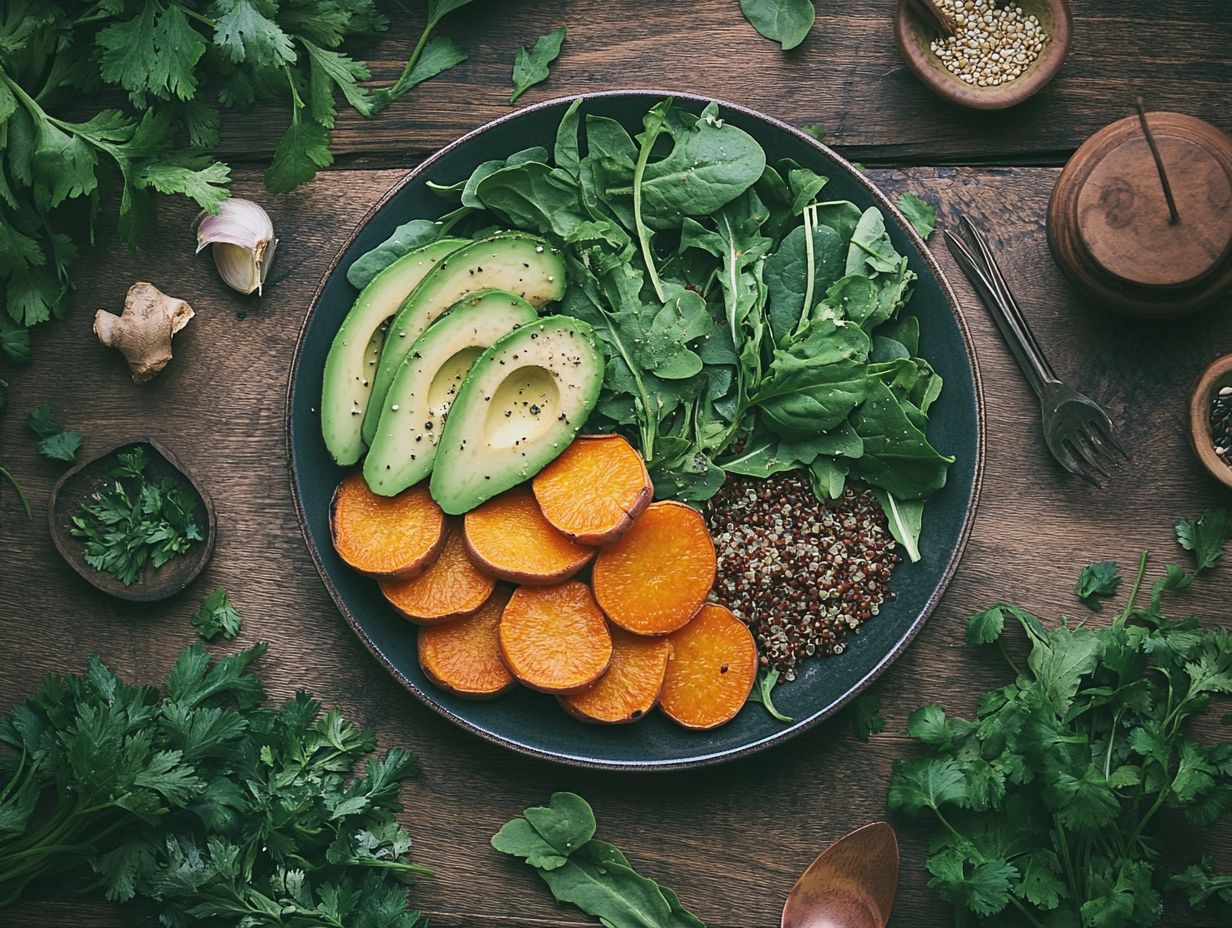
Low glycemic breakfast recipes are essential because starting the day with low glycemic foods can help stabilize blood sugar levels throughout the day, especially for those aiming to effectively manage their blood glucose. Incorporating gluten-free options and natural sweeteners like coconut sugar can further enhance these meals for those with dietary restrictions.
For example, breakfast options like oatmeal topped with nut butter and paired with low glycemic fruits offer sustained energy and vital nutrients when prepared mindfully. Adding a sprinkle of chia seeds or nutritional yeast can boost the fiber content and provide a rich array of nutrients.
Low Glycemic Oatmeal with Nut Butter and Berries
Low glycemic oatmeal topped with nut butter and fresh berries is a healthy and delicious breakfast that helps maintain balanced blood sugar levels. This satisfying meal combines high-fiber oats, protein from nut butter, and antioxidants from berries, supporting energy balance during the morning hours. Incorporating chia seeds and flaxseeds can further enhance the fiber-rich quality of this breakfast, making it an excellent choice for those following a plant-based diet or seeking recipes for diabetics.
This easy-to-make breakfast can be tailored to accommodate various dietary needs and preferences. For those seeking a vegan protein source, a scoop of plant-based protein powder can be added, or the nutritional content of the oatmeal can be enhanced by incorporating chia seeds and flaxseeds, making it suitable for a vegan diet and those looking for gluten-free options.
To add flavor, consider sprinkling cinnamon or adding a few drops of vanilla extract to the cooking water. For a creamier texture and lower glycemic index, you can use almond milk or coconut milk instead of water, both of which contribute a rich flavor while keeping the glycemic index low. This approach is ideal for those focusing on glycemic load and maintaining a balanced insulin response.
Avocado Toast with Tofu Scramble
Avocado toast with tofu scramble is a simple and nutritious breakfast that is ideal for a low glycemic diet. This dish combines healthy fats from the avocado with plant proteins from the tofu, making it a perfect choice for those looking to stabilize blood sugar while enhancing overall health. Incorporating nutritional yeast and smoked paprika can add a depth of flavor, while also aligning with anti-inflammatory foods beneficial for blood sugar control.
To prepare this dish, ripe avocados are mashed and mixed with lemon juice and salt for added flavor. For the tofu scramble, firm tofu is crumbled and added to a non-stick skillet along with olive oil, garlic, turmeric, and vegetables such as bell peppers, spinach, or kale. These fiber-rich foods not only enhance the taste but also contribute to improved blood sugar balance.
This straightforward cooking method infuses flavor into the tofu while providing a pleasing texture. Additional spices, such as smoked paprika and nutritional yeast, can be incorporated, and toppings like cherry tomatoes or microgreens can be added for a fresh touch.
Ultimately, the beauty of avocado toast with tofu scramble lies in its versatility and the countless ways it can be customized to suit individual preferences and dietary needs.
Lunch and Dinner Recipes for Balanced Blood Sugar
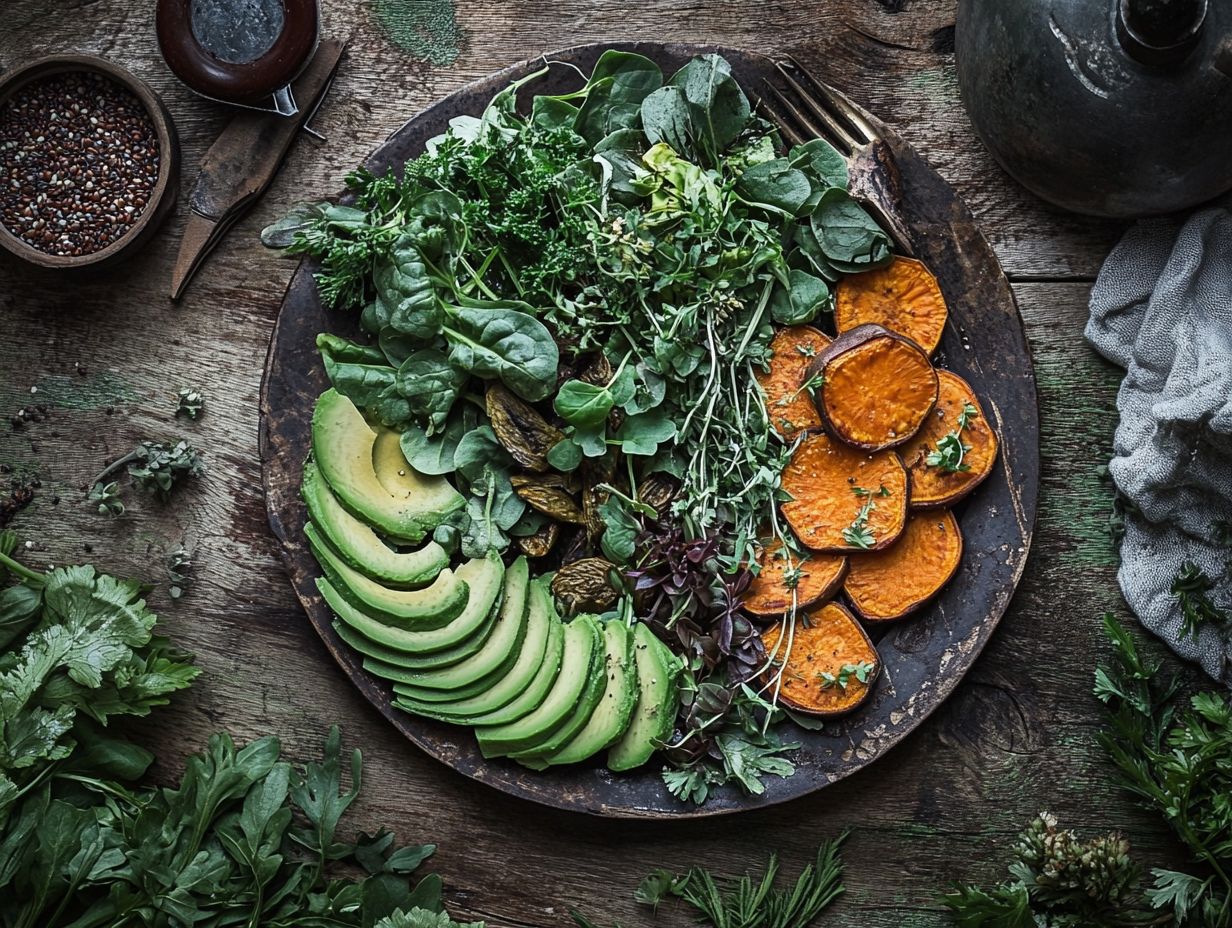
For lunch and dinner, incorporating low glycemic recipes can help maintain balanced blood sugar levels and provide the essential nutrients needed for stable energy.
By using a variety of whole foods and nutrient-dense ingredients in meals, individuals can support healthy eating habits while enjoying delicious and satisfying dishes.
Quinoa and Vegetable Buddha Bowl for a Plant-Based Diet
A quinoa and vegetable Buddha bowl is a vibrant, nutrient-packed meal that adheres to the principles of a low glycemic diet, offering a satisfying blend of flavors and textures. It’s an excellent addition to vegan recipes, providing whole grains and legumes that are crucial for a balanced plant-based diet.
Rich in fiber and antioxidants, this dish features a variety of colorful vegetables, making it not only visually appealing but also beneficial for blood sugar control. Incorporating sweet potatoes, carrots, or beets can add a natural sweetness and enhance its vitamin and mineral content.
Plus its deliciousness, this bowl can be customized with seasonal produce, allowing you to take advantage of fresh, local ingredients. Whether you choose to incorporate roasted sweet potatoes in the fall or crisp cucumbers in the summer, there are plenty of opportunities to adapt the recipe throughout the year.
Healthy fats, such as avocado slices or a drizzle of tahini, can enhance this dish even further, adding richness and creaminess that beautifully complement the wholesome grains and vibrant vegetables. Consider adding seeds like flaxseeds or chia seeds for added omega-3 fatty acids and fiber sources.
When prepared thoughtfully, a quinoa and vegetable Buddha bowl becomes more than just a meal; it transforms into a delightful experience that nourishes both the body and the senses.
Chickpea and Vegetable Curry
Chickpea and vegetable curry is a delicious and hearty dish that perfectly complements a low glycemic meal plan, offering a wealth of nutrients and plant-based protein. This recipe combines fiber-rich chickpeas with a variety of vegetables, creating a wholesome meal that helps maintain stable blood sugar levels while pleasing the palate. It’s a prime example of how legumes and vegetables can be used in vegan recipes for balanced blood sugar and meal diversity.
To prepare this vibrant dish, start by gathering an assortment of low glycemic ingredients such as bell peppers, spinach, and tomatoes, which not only enhance the flavor but also provide essential vitamins. Begin by sautéing onions and garlic in a little olive oil until they turn golden, then add the chopped vegetables to allow their natural sweetness to develop.
Next, incorporate the chickpeas along with a medley of spices like cumin and turmeric to enhance the dish’s nutritional profile and showcase your culinary creativity. Additionally, consider making food swaps, such as using coconut milk instead of cream, to add richness without raising the glycemic index, supporting a healthy lifestyle and weight management through mindful eating and portion control.
This results in a comforting curry that beautifully balances health and taste.
Snack and Dessert Ideas for Low Glycemic Eating
Low glycemic index snacks and dessert options are essential for individuals looking to maintain stable blood sugar levels while still enjoying delicious foods. Incorporating sugar alternatives like stevia, tagatose, or coconut sugar can provide sweetness without significantly impacting blood sugar, aligning with nutrition guidelines for diabetes-friendly and vegan desserts.
By incorporating nutrient-rich ingredients, these low glycemic choices make it possible to indulge in tasty snacks and desserts without compromising health.
Roasted Chickpeas with Herbs and Spices
Roasted chickpeas are a nutritious, low glycemic snack that provides protein and fiber, making them an excellent alternative to traditional snacks. They are versatile in terms of cooking methods, flavoring options, and serving suggestions. This healthy snack is rich in vegetable protein and a great choice for those following a vegan diet or seeking diabetes-friendly recipes.
While you can prepare them in an oven, using an air fryer will yield quicker results. Roasted chickpeas can be seasoned with a variety of flavorings, such as:
- garlic powder
- lemon zest
- smoked paprika
- curry powder
- cheese powder
- cayenne pepper
They pair well with dips like hummus or tzatziki and can be presented on a party platter for guests or included as part of a packed lunch. Additionally, roasted chickpeas can be enjoyed on their own or added to salads for an extra boost of protein.
Dark Chocolate and Nut Trail Mix
Nutritional Value: This trail mix is not only delicious but also a low glycemic meal or snack option. Combining dark chocolate with a variety of nuts creates a satisfying treat that balances indulgence with nutrition. The healthy fats found in nuts and the antioxidants present in dark chocolate help curb cravings while delivering essential nutrients.
Ingredients:
- 1 cup of mixed unsalted nuts (such as almonds, walnuts, pistachios, etc.)
- ¼ cup of dark chocolate (70% cocoa or higher)
Instructions:
- Start by adding the mixed nuts to a bowl.
- Combine them with high-quality dark chocolate, chopped into small pieces. You can also substitute dark chocolate with cocoa nibs or chocolate-covered nuts if preferred.
Serving Size: Serve approximately a quarter cup to promote portion control and encourage mindful eating.
Variations: Consider adding dried fruits like cranberries or apricots for sweetness, or incorporating seeds such as pumpkin or sunflower seeds for added crunch. Feel free to make substitutions based on your taste preferences and ingredient availability.
